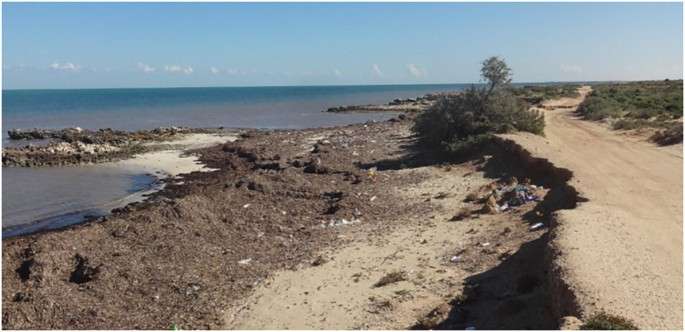Tunisia’s coastline faces alarming erosion threat

Tunisia’s coastline continues to erode at an alarming pace, driven by rising sea levels, unchecked urbanisation, and intensifying climate change, as reported by The Arab Weekly plus agencies on July 31st.
This environmental degradation threatens local livelihoods, national heritage, and key pillars of the economy such as tourism and agriculture. Yet, recent examples, such as in the city Gabes, have shown that when push comes to shove economic recovery is prioritised. Considering the state of Tunisian finances currently such prioritisation is not wholly unexpected.
Mohamed Ayadi Essouissi, a fisherman and beachfront restaurant owner, watched helplessly as seawater swallowed part of his property. “This beach won’t exist in five years…the tide is rising, and you can see the water levels going up all across Kerkennah.”
More than 35% of Tunisian beaches now suffer from erosion. Hammamet loses up to eight metres of shoreline each year. The World Bank ranks Tunisia among the world’s most vulnerable countries to marine erosion, with 260 of its 670 kilometres of sandy coast already affected. The projected financial impact could exceed $2.3 billion between 2030 and 2050.
Kerkennah and the Sfax governorate face some of the worst damage. Samir Kebaili, a local geographer, highlighted the submersion of Sersina, an ancient Carthaginian city, due to sea encroachment. “The erosion has even swallowed history,” he said. Which, if true, could seriously hinder Tunisian development plans.
Professor Riadh Bouaziz confirmed that coastal retreat now advances at 0.5 to 0.8 metres per year. “The sea is encroaching on the land,” he warned. Saltwater intrusion and soil salinisation increasingly threaten agriculture and freshwater reserves.
Morsi Feki, of the Coastal Protection and Planning Agency in Sfax, revealed that Tunisia, in partnership with German stakeholders, has launched defence projects covering 11 kilometres of Kerkennah’s shoreline. Yet 30% of the coast remains vulnerable.
The Ministry of Environment warns sea levels could rise 30 to 50 centimetres by 2050, placing tourism, ports, and infrastructure in jeopardy. Efforts since 2013 have restored only 35 kilometres.
The Arab Weekly plus agencies, Maghrebi.org
Want to chase the pulse of North Africa?
Subscribe to receive our FREE weekly PDF magazine











